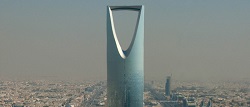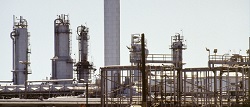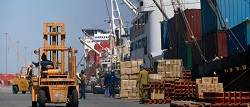
ECONOMY
Recent regulatory improvements designed to strengthen the country’s business and investment appeal could trigger a further GDP uptick.
Find out more

Have questions about SAB banking services? Let us help you with these frequently asked questions.
FAQSOur friendly Customer Support team are on hand to help with any queries you have. We're here to help!
Contact UsQuick Links
© SAB, Saudi Arabia. All Rights Reserved, 2025
Saudi Awwal Bank, a listed joint stock company, incorporated in the Kingdom of Saudi Arabia, with paid in capital of SAR 20,547,945,220, commercial registration certificate 1010025779, unified number 7000018668, Mailing Address: P.O. Box 9084, Riyadh 11413. National Address: 7383 King Fahad Branch Rd, 2338 Al Yasmeen Dist., 13325 Riyadh, Kingdom of Saudi Arabia, Tel. +966 11 4050677, www.sab.com, licensed pursuant to the Council of Ministers Resolution No. 198 dated 06/02/1398H and Royal Decree No. M/4 dated 12/08/1398H, and regulated and supervised by the Saudi Central Bank.


Recent regulatory improvements designed to strengthen the country’s business and investment appeal could trigger a further GDP uptick.
Find out more
The vulnerability of the global food supply chain is one of the factors driving the kingdom to invest in developing its capabilities to become self-reliant.
Find out more
The country is seeking to complete its quest of becoming a global digital gaming giant by investing in developing talent and innovation.
Find out more
As a ‘bridge fuel’, natural gas has been seen as a cleaner alternative to coal and provides a back-up for renewables in today’s shifting energy dynamics.
Find out more
India, in particular, has been one of the major buyers of Saudi non-oil exports, bolstering the kingdom’s economic diversification goals.
Find out more
IN THIS EDITION
Over the past eight years, Saudi Arabia has launched real estate and infrastructure projects valued at USD 1.3 trillion as part of an ambitious plan to diversify its economy beyond oil, and enhance its appeal as a destination for living, working, and tourism.
According to Knight Frank’s latest Saudi Giga Projects Report, the volume of these projects has increased by 4% in the past year. These include more than a million residential units and large-scale developments like Neom on the Red Sea coast.
Since 2016, when authorities introduced a strategy to reduce the kingdom’s reliance on oil revenue and improve the quality of life for its citizens, approximately USD 164 billion in real estate contracts have been awarded.
Neom, the futuristic city being developed on the Red Sea, has attracted the largest portion of that spending, with USD 28.7 billion allocated. Major projects receiving substantial investment include the National Housing Company (USD 12 billion), Diriyah Gate development (USD 9 billion), and Riyadh's Qiddiya entertainment city (USD 7 billion).
Although many mega projects are still in progress, Saudi Arabia is accelerating efforts to address challenges related to supply chains, labour, and costs. Majority of developments are expected to be completed between 2028 and 2030, positioning the country to become the world's largest construction market by that time.
Riyadh remains a central hub, with USD 35 billion worth of contracts awarded so far. By the next decade, the Saudi capital is set to gain nearly 29,000 hotel rooms, 4.6 million square metres of offce space, and 340,000 homes, as it prepares to host global events like the 2030 World Expo and the 2034 FIFA World Cup.
Knight Frank also noted that more than USD 54 billion has been invested in Saudi Arabia’s western region, where 17 major giga projects are currently underway.
Much of this construction aims to support economic diversification, accommodate the growing population, and attract international investors and tourists. Saudi Arabia plans to generate USD 100 billion in foreign direct investment by 2030 and aims to welcome 150 million tourists annually by the same year. In 2023, the country recorded around 109 million visitors, mostly domestic.
To meet the anticipated influx of tourists, the kingdom is on track to add 362,000 new hotel rooms by the end of the decade, with an investment of USD 110 billion. Knight Frank stressed the importance of developing more mid-range accommodations, alongside the four- and five-star hotels, to appeal to a broader range of visitors, which will be essential for achieving the 2030 target of welcoming 150 million tourists.
You are about to leave this site. You are being redirected to an external site. Would you like to leave this site?
© SAB, Saudi Arabia. All Rights Reserved, 2025
Saudi Awwal Bank, a listed joint stock company, incorporated in the Kingdom of Saudi Arabia, with paid in capital of SAR 20,547,945,220, commercial registration certificate 1010025779, unified number 7000018668, Mailing Address: P.O. Box 9084, Riyadh 11413. National Address: 7383 King Fahad Branch Rd, 2338 Al Yasmeen Dist., 13325 Riyadh, Kingdom of Saudi Arabia, Tel. +966 11 4050677, www.sab.com, licensed pursuant to the Council of Ministers Resolution No. 198 dated 06/02/1398H and Royal Decree No. M/4 dated 12/08/1398H, and regulated and supervised by the Saudi Central Bank.
This message looks like it might contain confidential information. For your security, I'll keep this between us and won't share it with anyone.
يبدو أن هذه الرسالة تحتوي على بيانات ومعلومات سرية. لحماية بياناتك، يرجى العلم أنني لن أقوم بمشاركة هذه البيانات مع أي شخص آخر.
You do not have the permission to send any text message right now .. Please try again later
ليس لديك الصلاحية لإرسال أي رسالة نصية الآن .. يرجى المحاولة مرة أخرى لاحقًا
